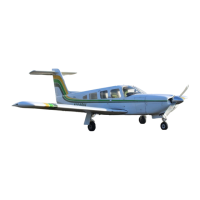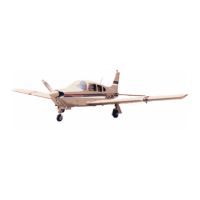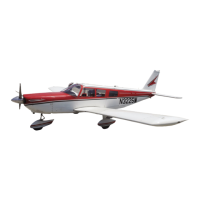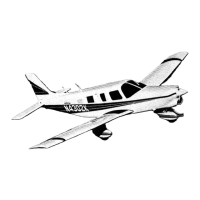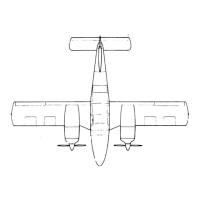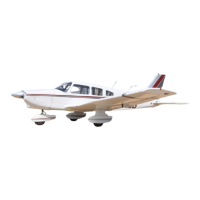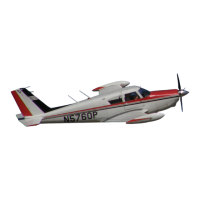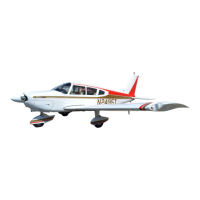PIPER
SENECA
II
SERVICE
MANUAL
Figure 11-16. Turning Motor
Commutator
Figure 11-17. Testing Motor
Armature for Shorts
11-33. BR
US
HES. Check the brushes
to
see
that
they slide freely in their holders and make full contact
on
the commutator. If worn
to
half
their original length
or
less, they should be replaced.
11-34. ARMATURE.
a.
Check the
commutator
for uneven wear, excessive glazing,
or
evidence
of
excessive arcing. If only
slightly dirty, glazed
or
discolored, the
commutator
can be cleaned with 00
or
000 sandpaper.
lf
the
commutator
is
rough
or
worn, it should
be
turned
in
a lathe. (Refer
to
Figure 11-16.)The armature shaft
should be inspected for rough bearing surfaces and rough or damaged splines.
b.
To
test the armature for grounds, a set
of
test probes connected in series with a 110-volt light
should be used. Touch one probe to a
commutator
segment and the
other
to the armature core. If the test
lamp lights, the armature
is
grounded and should be replaced.
c.
To
test for shorted armature coils. a growler
is
used. (Refer to Figure 11-17.)
The
armature
is
placed on the growler and slowly
rotated
by
hand while a steel strip
is
held over
the
core so
that
it passes
over each armature core slot. If a coil
is
shorted, the steel strip will vibrate.
d. A quick check for opens can be made by inspecting
the
trailing edge (in direction
of
rotation)
of
the
commutator
segments for excessive discoloration. This condition indicates an open circuit.
11-35. FIELD COILS.
a.
Check the field coils for grounds (refer
to
Figure 11-18) by placing one test probe
on
the frame
and
the
other
on
the starter terminal.
Be
sure
the
brushes are
not
accidentally touching the frame. If the
lamp lights,
the
fields are grounded. Repair
or
replace.
b. Inspect
all
connections to make sure they are clean and tight and inspect insulation for
deterioration.
Reissued:
10/11/79
ELECTRICAL SYSTEM
2Gl8
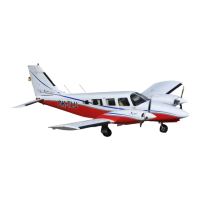
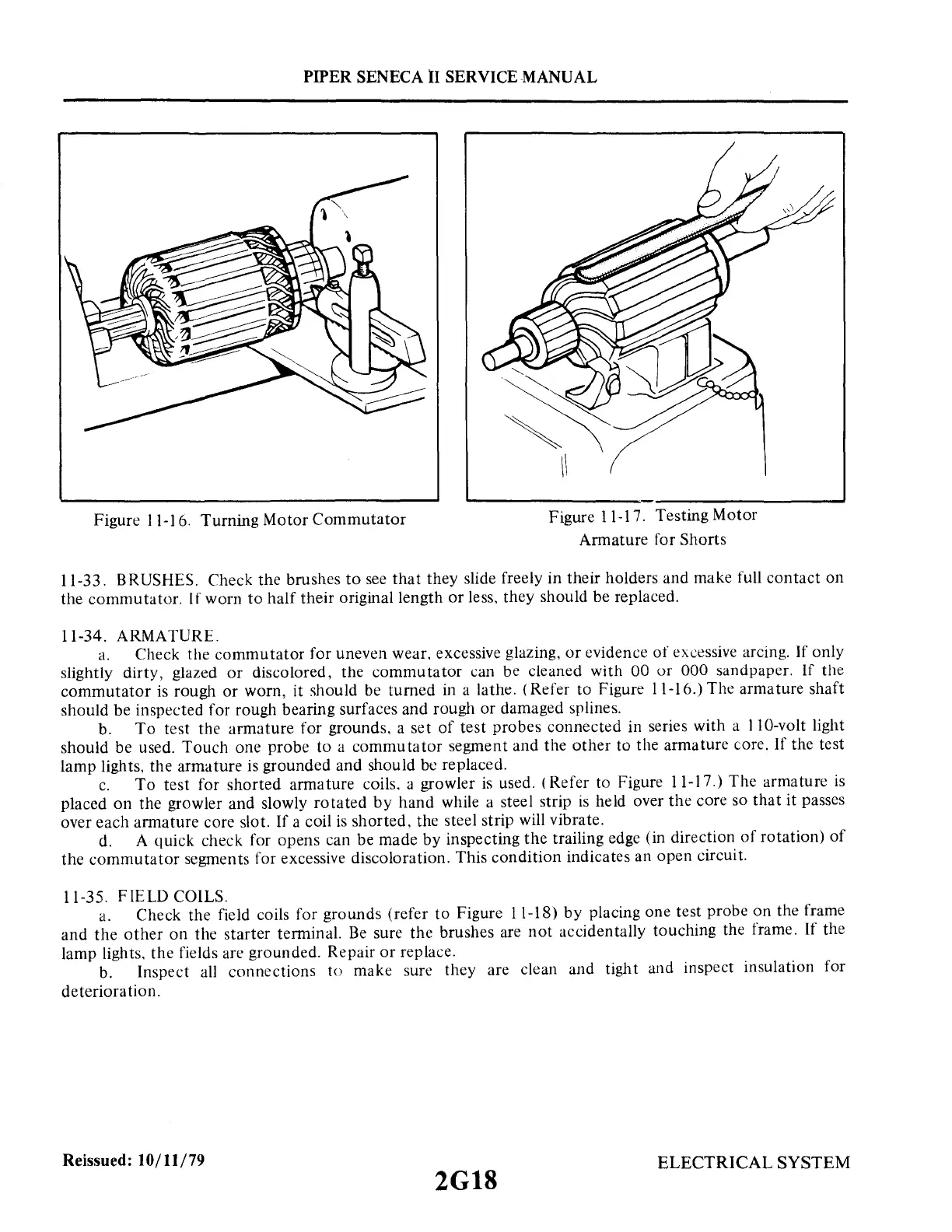